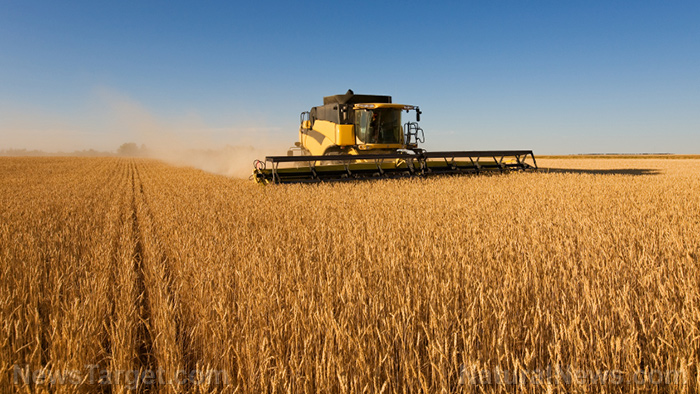Inflation, halting of exports and now failing crops: The wheat apocalypse is upon us
03/09/2022 / By Ethan Huff

The United States Department of Agriculture (USDA) released its wheat report for February and the situation is grim.
A disastrous harvest from several months back is still being felt with limited supplies of soft white wheat, which is the primary type of wheat grown in the Inland Northwest.
The result of this is a six-year low for wheat exports from the United States, which is on top of the fact that 71 percent of U.S. winter wheat, another prominent variety, is currently being hit by drought.
Rising supply costs and unstable global wheat markets are only making matters worse, as is the war in Ukraine.
The hardest-hit countries so far are in North Africa, and mainly Egypt, which heavily relies on Eastern Europe for grain imports.
With Ukraine cutting off all wheat exports and the U.S. having little to spare, Egypt and other countries like it are already feeling the squeeze.
“The fragile state of Egypt’s food security stems from the agricultural sector’s inability to produce enough cereal grains, especially wheat, and oilseeds to meet even half of the country’s domestic demand,” reports explain.
“Cairo relies on large volumes of heavily subsidized imports to ensure sufficient as well as affordable supplies of bread and vegetable oil for its 105 million citizens. Securing those supplies has led Egypt to become the world’s largest importer of wheat and among the world’s top 10 importers of sunflower oil.”
Hyperinflation and global famine are the next horses to ride
Before the war back in 2021, Cairo was already seeing food inflation levels as high as during the 2011 Arab Spring. Currently, food prices are higher than they were back then.
Former Egyptian President Hosni Mubarak was removed as his government was toppled, and was replaced by President Abdel-Fattah el-Sisi, who for eight years, supposedly, tried to get things back in order.
That plan failed as food prices continue to soar to record levels, with the price of wheat increasing by an additional 44 percent ever since Russia invaded Ukraine. Similarly, sunflower oil prices rose about 32 percent overnight.
“Even more troublesome, the war also threatens Egypt’s physical supply itself since 85% of its wheat comes from Russia and Ukraine, as does 73% of its sunflower oil,” reports explain.
Egypt is desperately trying to find alternative suppliers for these and other products, but the situation looks grim. As things continue to heat up in Eastern Europe, there is a chance that Russian supplies are also taken off the market, which would probably mean game over for Egypt.
“With about four months of wheat reserves, Egypt can meet the challenge, but to do so, Cairo will need to take immediate and decisive action, which can be made even more effective with the timely support of its American and European partners,” reports indicate.
China also grows food crops for export, but apparently that country’s crop yields have been dismal just like in the U.S.
Ministry of Agriculture and Rural Affairs Tang Renjian announced that rare heavy rainfall last year (remember all the flooding?) delayed the planting of about one-third of China’s normal wheat acreage.
A survey conducted before the start of winter found that the amount of first- and second-grade wheat crop was already down by more than 20 percentage points.
“Not long ago we went to the grassroots to do a survey and many farming experts and technicians told us that crop conditions this year could be the worst in history,” Tang revealed.
“This year’s grain production indeed faces huge difficulties.”
Russia and Ukraine, meanwhile, together produce about 29 percent of global wheat exports. Disrupted supplies from these two countries has caused wheat prices to surge to 14-year highs.
More related news can be found at Collapse.news.
Sources for this article include:
Submit a correction >>
Tagged Under:
apocalypse, chaos, collapse, crisis, crops, famine, food collapse, food shortage, food supply, grocery, harvest, inflation, Plandemic, products, Russia, shortages, starvation, supply chain disruptions, Ukraine, war, wheat
This article may contain statements that reflect the opinion of the author
RECENT NEWS & ARTICLES
WheatWar.com is a fact-based public education website published by WheatWar.com, LLC.
All content copyright © 2022 by WheatWar.com, LLC.
Contact Us with Tips or Corrections
All trademarks, registered trademarks and servicemarks mentioned on this site are the property of their respective owners.





















